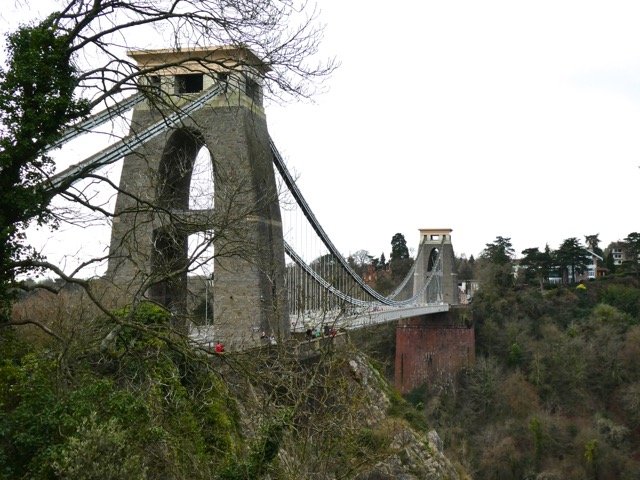
Clifton suspension bridge crosses the Avon Gorge, a tidal river linking Bristol Harbour to the sea. They had a competition in 1831 to build a bridge that 3-masters could get under, It was judged by Thomas Telford who was good at bridges, he had just built the one across to Anglesey. He rejected all entries (which included four from Brunel) and then pulled one of his own out of his back pocket which he said was much better.
So they asked Telford to build it but then realised they could not afford it. Brunel had a quiet word with the judges and pulled a new design out of his back pocket that was £10000 under Telfords. Then the people of Bristol decided to riot and suddenly nobody wanted to go there any more and work stopped. Brunel took the ironwork to build his Royal Albert bridge at Saltash, the splendid one you see when you go to Plymouth. Then he died.
It was only when they dismantled Hungerford suspension bridge in 1860 in London that the remaining needed links in the suspension chain were obtained second-hand at a knock-down price and building could restart. It was supposed to be Egyptian with stone sphinxes on the towers but they couldn’t afford those either.
Its a splendid bridge built before they had invented wire to make these kinds of things. Its made out of real Meccano. If you take a very large spanner set with you as you walk across you can undo it.
Here is something not many people know. William Butterfield, the arch emperor of Victorian Gothic and architect of my old Oxford college, Keble, sent in a design to the competition when he was 15. Isn’t it splendid? What a pity they did not take him seriously.

